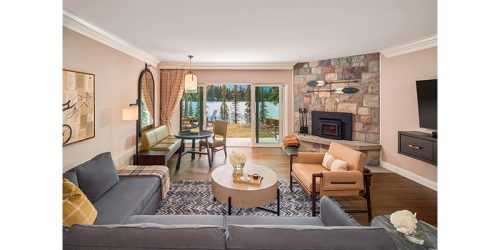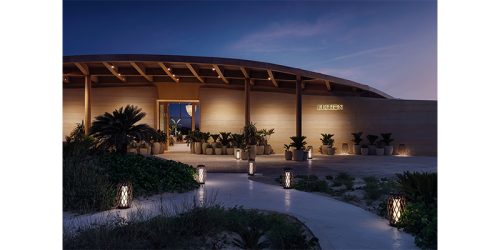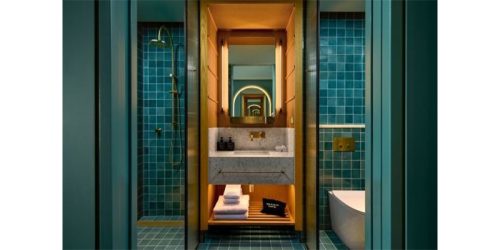How wellness is transforming hospitality and design
Wellbeing has become a global movement. It is fast becoming a status symbol among consumers, who continue to prioritise their physical and mental health, and the industry is evolving in line with shifting and ever-nuanced demands.
While the global economy experiences slow growth, wellness – now one of the fastest growing sub-sectors of the hospitality industry – has grown by 10.6 per cent between 2013 and 2015. This figure, according to one of the world’s leading integrated design firms; WATG, is on the rise.
With the establishment of the ‘experience economy’, wellness travellers now demand innovative and interesting ways in which they can improve their health on holiday. According to WATG, 2018’s resort wellness trends will focus on the prevention of diseases, strengthening mental health, offering a total sensory experience and providing truly personalised dietary assessments.
In the WATG paper Resort Wellness; Beyond the Spa, this selection of trends and areas of growth within the wellbeing industry are analysed, and the hotel industry in particular is placed under the microscope. The paper also explores the expansion of wellness from a niche industry, offered primarily on a spa treatment menu, to a global economy that is intertwined with sustainability and embraced by developers and architects, seeking to bring the outside in.
Key resort and spa trends:
- The World Health Organisation predicts that mental depression will be the world’s most prevalent health issue by 2030. Hotels and resorts are repositioning their wellness offerings; the new era of spa will be less pampering and more a place for mental healing and prevention.
- Resorts and spas are entering into ‘soft’ medical tourism, offering programs which are developed and executed by doctors and health professionals e.g. extensive body scans, doctors’ visits, overnight sleep labs, neurological enhancement programmes and biomarker measurements.
- Wellness is becoming more than yoga and meditation; it’s becoming a sensory experience, on the basis that the more senses involved, the more memorable and beneficial the experience will be; for example through sound bathing, yoga concerts, infrared saunas.
- Loneliness is a global epidemic, due in part to social media, technology and hot-desking making it easier to avoid real-life relationships and creating less face-to-face interaction. Wellness travel is becoming more about bringing people together to create a community; for example through communal tables, workshops and discussions.
- Nutrigenomics is the study of how genes and food interact, and it allows guests to see which foods they need more or less of in order to attain optimal health. Moving forward, resorts and spas will have access to technology which can recognise an individual’s nutritional profile and provide dietary recommendations, ensuring truly personalised cuisine to each guest.
Andrea Lindgren, of WATG said: “The world’s population increasingly understands the importance of taking care of the human body and mind. This growing awareness of wellbeing has influenced a number of sectors, perhaps none more so than the hospitality industry.”
Design
This evolution in holistic awareness has led to the application of wellness design in hotels and resorts. Wellness design targets the development of architecture and landscape, which aims to improve people’s mental health and wellbeing simply by being in the property. WATG have identified numerous ways in which architecture and design have been found to enhance the wellbeing of occupants, notably through materials, lighting, air quality and the incorporation of nature.
- Development of buildings – especially hotels – which make occupants both healthier and happier, is growing significantly. Sensory management is a key component of wellness design, with consideration given to the careful control of light (for example circadian lighting, to control mood and body clock), temperature, air quality and noise.
- Direct and indirect exposure to nature has proven to have significantly positive impacts on people’s mental and physical health – this has resulted in a sharp rise in biophilic design, the resulting emerging style which brings nature indoors, which WATG predicts will become a basic philosophy throughout the hotel sector. This design style is created not just by bringing greenery and gardens indoors, but via seamless transitions between indoors and outdoors (eg. Soneva Jani offers villas with retractable roofs, allowing guests to watch the stars instead of TV.)
- Wellness and sustainability are two sides of the same coin. Hotel resorts are increasingly making true commitments to sustainability without compromising on comfort and luxury, offering true eco-integrity and allowing guests to refocus on improving human health and giving back to their planet; for example, Lefay Resort & Spa in Lake Garda, became the first hotel in Southern Europe to receive the Green Globe certification.
- If a site does not already benefit from natural energy (Two Bunch Palms is built on an energy fault line, with staff adamant that they are able to incorporate the positive energy into the experience) Feng Shui and Vaastu Shastra are claimed to maximise such energy between humans and the places they inhabit – Claudia Wagner, Manager of Spa Dreams, reports that clients are increasingly searching for resorts aligned with these philosophies.
WATG’s Director of Spa and Wellness Design, Jean Dusek Klueter, said: “We’ve increasingly become aware that there is a certain style that people are now aiming for, it is no longer the Asia themed spa design; it is more contemporary with clean lines and natural lighting used in the interior design.”
You can download the full White Paper here!











